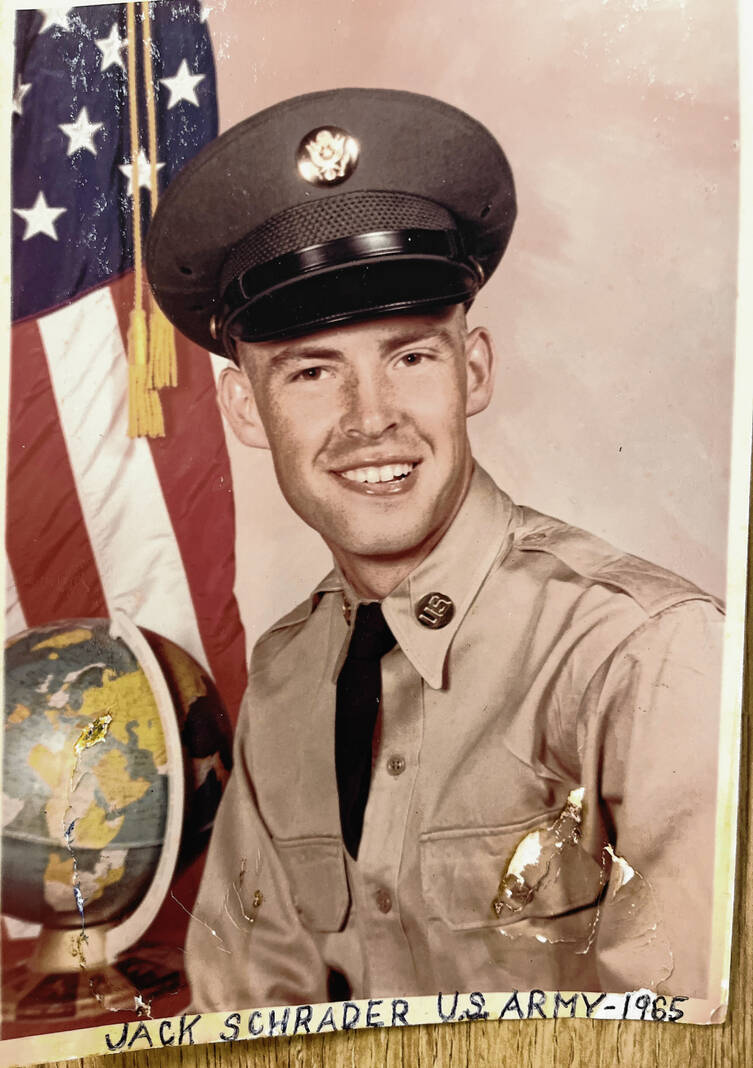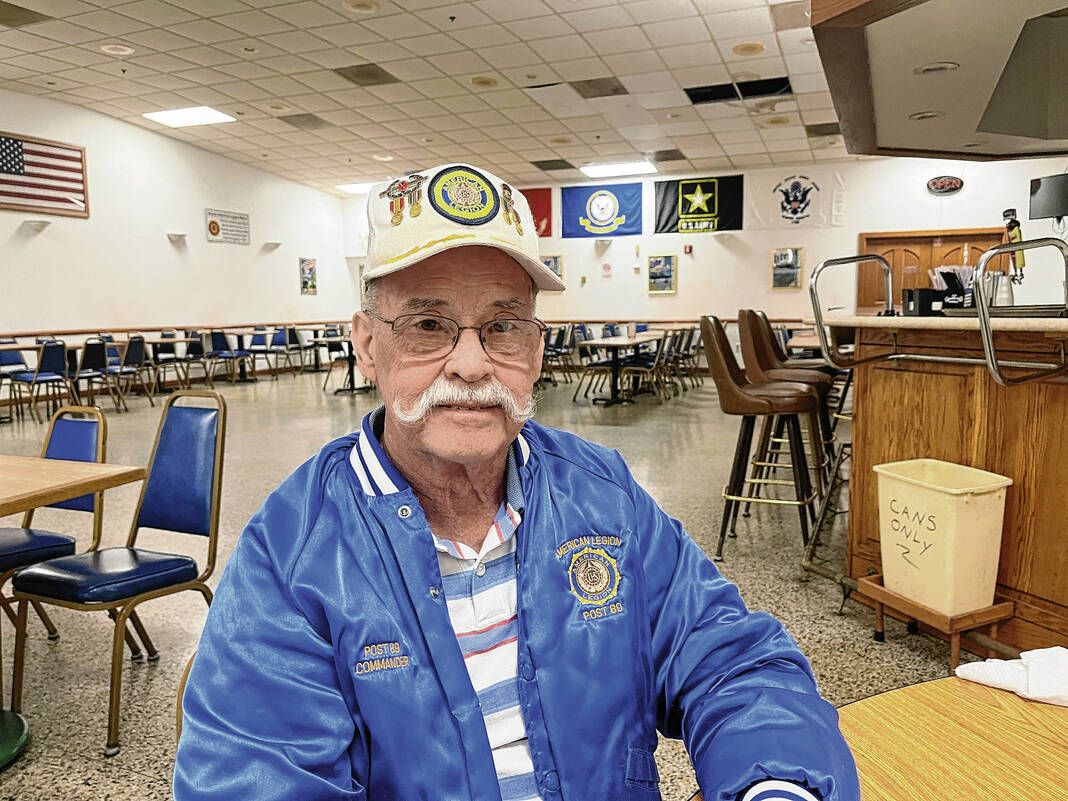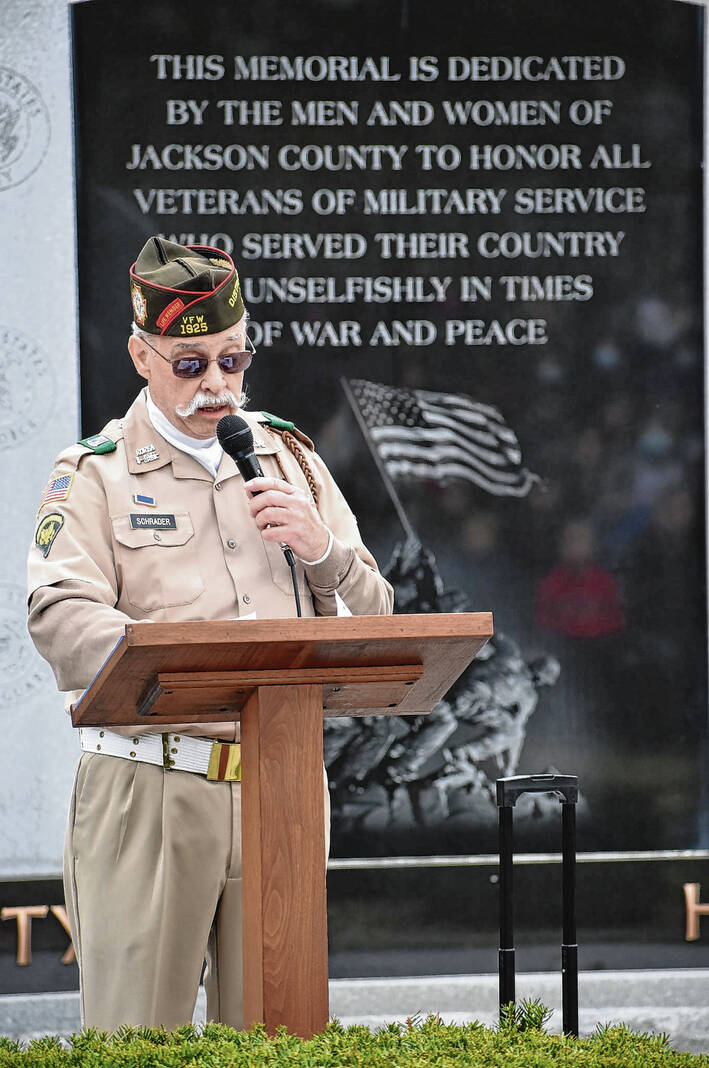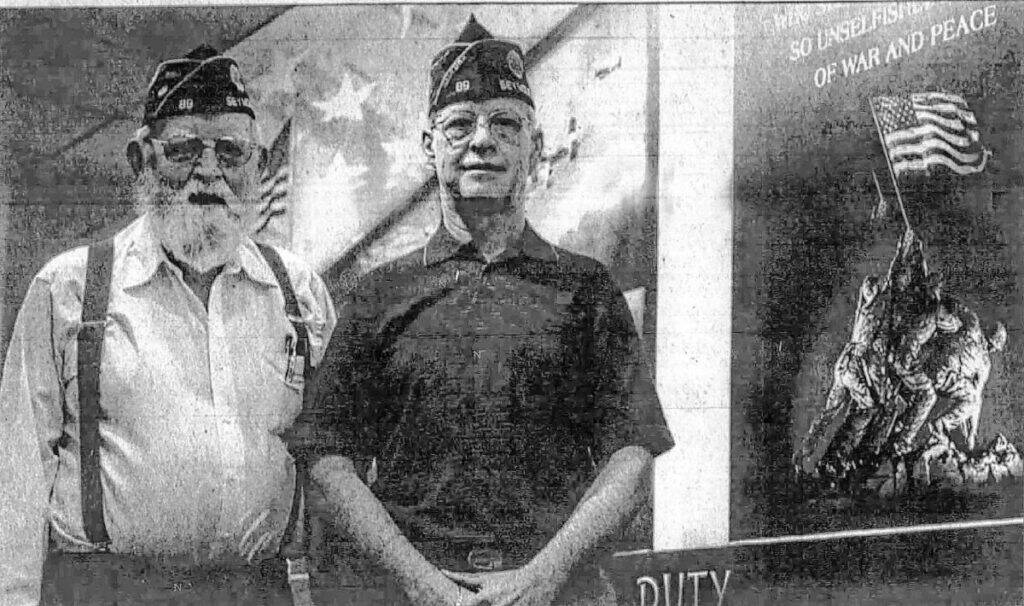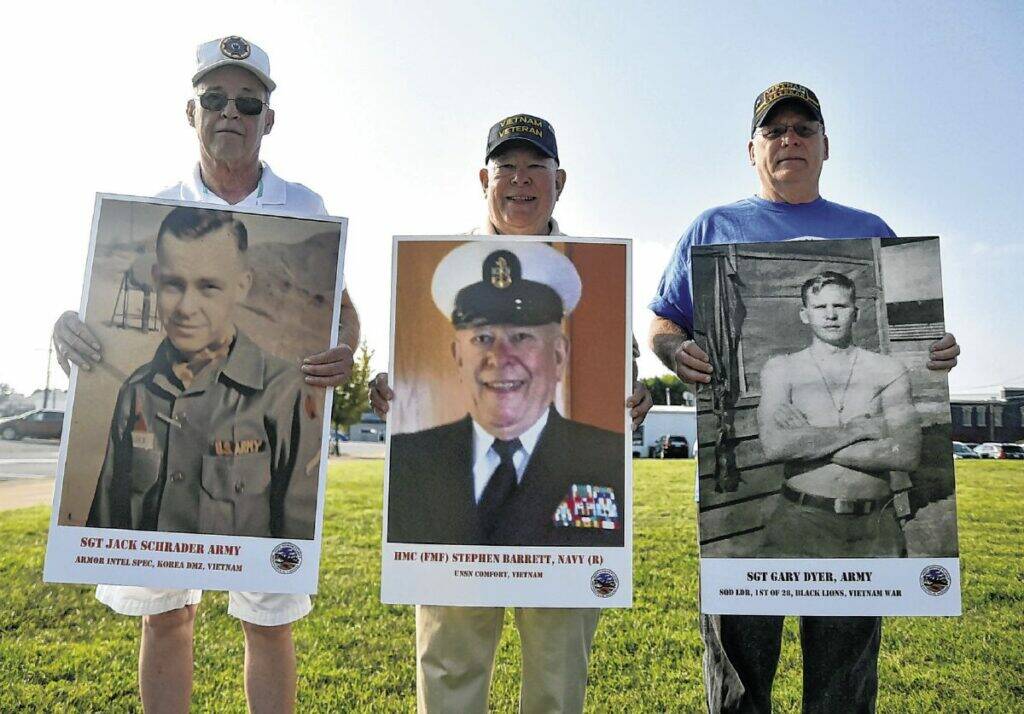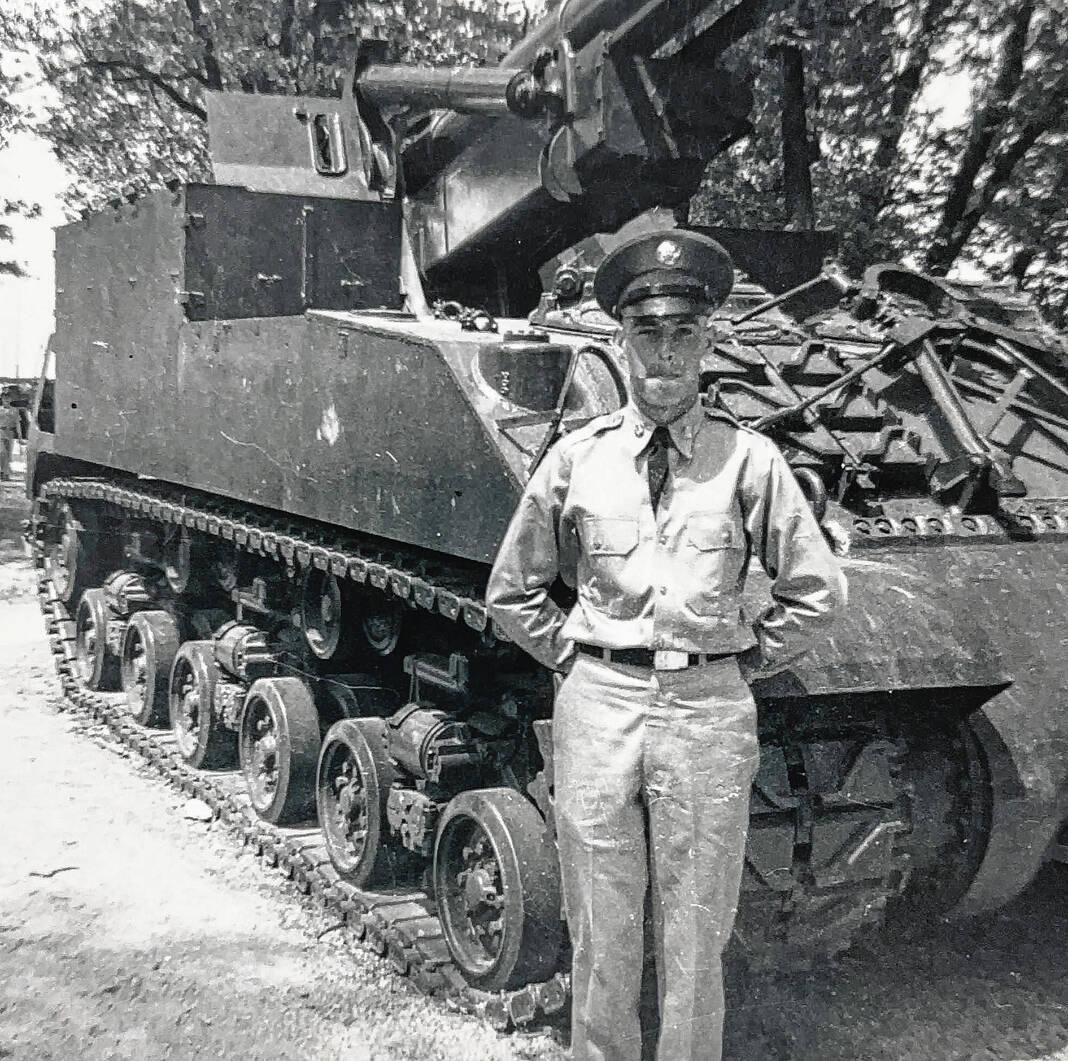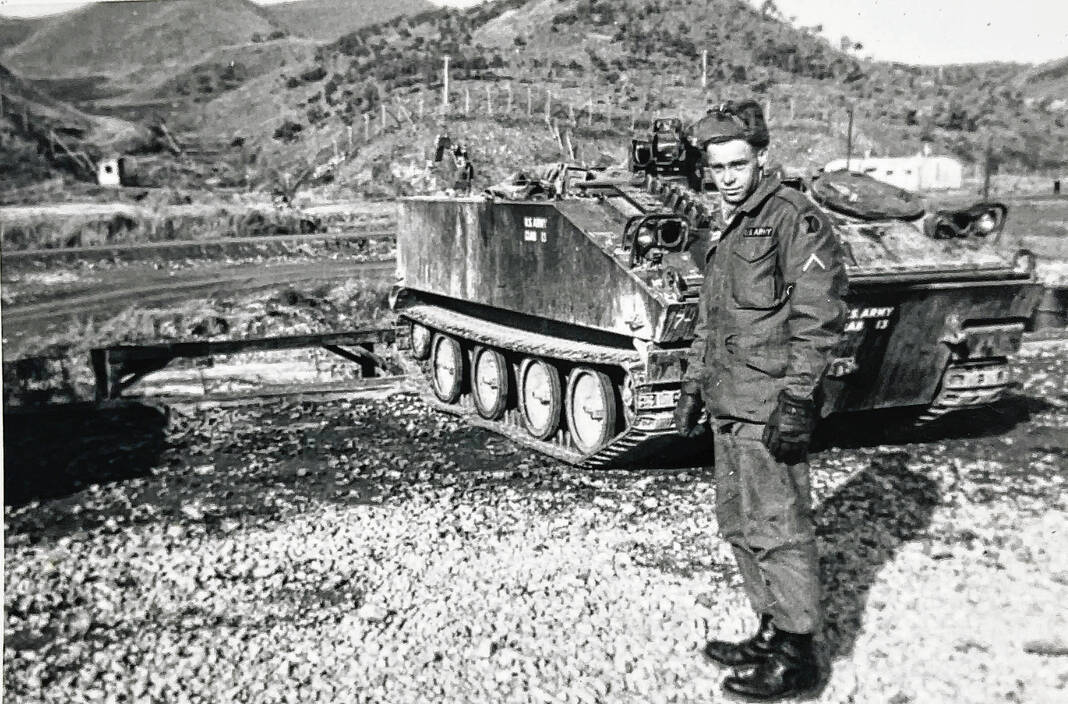In 1965, a Seymour man was drafted into the U.S. Army and spent two years serving his country.
That service eventually led to Jack Schrader spending most of his adult life serving his fellow veterans by taking on leadership positions with the Veterans of Foreign Wars and American Legion in the city.
Schrader’s military service began in March 1965 when he was drafted into the U.S. Army.
“I reported on April 19, 1965,” the now-79-year-old said. That was in the midst of the Vietnam War.
Schrader completed his basic and advanced infantry training at Fort Knox in Kentucky.
“I was trained as an armored intelligence specialist,” he said.
Schrader also graduated from the Noncommissioned Officer Academy at Fort Knox and then was sent to South Korea with the 7th Infantry Division.
“I spent 13 months on the DMZ (demilitarized zone) there,” he said. “We spent most of our time chasing North Korean infiltrators who had crossed the DMZ. There were many firefights and ambushes at that time.”
That was during a three-year period from 1966 to 1969 that the VFW calls the Second Korean War.
During that time, there were about 45 GIs killed in the area, Schrader said. Another 145 or so were wounded in action.
“I arrived in Korea an specialist E2, and I left as a specialist sergeant E5,” Schrader said.
While in Korea, he received the National Defense Service Medal, Armed Forces Expeditionary Medal, Korean Defense Service Medal and 7th Infantry Division Combat Service Medal for his service on the DMZ.
Schrader returned to the states in April 1967.
He said everything about Korea, especially the weather, was pretty terrible.
“I about froze to death,” he said.
U.S. military personnel also were made to wear the uniforms the whole time they were in Korea.
“24/7,” he said.
One thing in particular, however, sticks out about his service overseas — the lack of recognition for the GIs stationed in Korea by the military brass back home.
“The Pentagon didn’t want to hear anything about Korea with Vietnam going on,” Schrader said. “Johnson (President Lyndon Johnson) didn’t want to hear nothing about Korea or anything else, so they had to keep everything pretty quiet.”
When Schrader returned to the states right before Thanksgiving in 1966 with a bunch of other soldiers from Korea, they were told to stick together at the airport in Seattle because there Vietnam War protesters there.
“They said, ‘If you have to go to the restroom, take four or five of your buddies with you because they will jump you in the restroom,’” Schrader said. “We didn’t know what was going because there was no TV or news (in Korea).”
He said the protesters had their signs and would throw eggs at military personnel walking through the airport.
Schrader avoided any real trouble with protesters at the airports in Seattle, Chicago (his second stop) or Louisville.
But he got off of the train at the depot in Seymour and decided to walk around downtown to see that was going on. He was dressed in his Class A uniform.
“It was about 20 (minutes) after 3 (p.m.) and there were people walking around,” Schrader said.
He said he was standing around looking, and all of a sudden, he heard someone blowing their car horn.
“I thought somebody saw me and recognized me,” Schrader said. “I turned around and looked, and coming across the railroad tracks south on Chestnut Street, I will never forget, but there was a ‘56 Chevrolet — two-tone green. It had four high school kids in it, and they were blowing their horn and had their arms stuck out the window giving me the finger and calling me every obscene name you could think of. I was the only guy standing there with a uniform on, so I knew they were directing it right at me. It just felt so bad, and I said, ‘Well, Schrader, there’s your welcome home.’”
He said he headed straight to his mom’s home on Oak Street, took the uniform off and didn’t put it back on until his 30-day pass.
“I said, ‘They were not going to embarrass me again,’” Schrader said. “I said, ‘By gosh, I gave two years of my life in service to my country and then get treated like this when I came home.’”
He then caught a train to Fort Carson in Colorado, where he and other soldiers finished out their tours of duty by helping new privates get through their advanced infantry training.
After leaving active duty, Schrader spent the next four years in the Army Reserve before being honorably discharged in April 1971.
In July of that year, he got married and took a job with Cummins in January 1968. He retired from Cummins in 1998.
In 1975, his father-in-law, who was a World War II veteran, talked him into joining VFW Post 1925 in Seymour.
Schrader said he was hesitant at first but later agreed to fill out an application to join the post.
“Back then, they had a meeting every Tuesday night, 52 nights a year,” he said.
At first, the post wouldn’t take him because discharge didn’t list his medals. Schrader eventually was able to straighten that out by contacting longtime Ninth District Congressman Lee Hamilton’s office. He then was able to become a member of the post.
“I went to the first meeting,” Schrader said. “The second week, they made me junior vice commander because the guy who had it resigned.”
He became senior vice commander the next year, and then the commander resigned, moving Schrader up to the commander. That was in 1977.
The coming year turned out to be extra special, Schrader said.
During the state VFW convention in 1978 in Indianapolis, the Seymour post won the Americanism Award and was seventh in the nation. Schrader also was one of 20 all-state post commanders that year.
Also that year, Schrader pulled off a major accomplishment for the post by convincing a national VFW officer to participate in the annual V-J Day parade.
“We were coming up on the 32nd V-J Day parade,” he said. “We couldn’t get anybody.”
Then during the state spring conference in 1978 in Indianapolis, he approached Eric Sandstrom, the national senior vice chairman at the time, and asked if he could help get a national officer to participate in the parade.
Sandstrom agreed to come, but Schrader wasn’t convinced it would happen.
“He showed up that Friday and brought all the state officers and county officers from around here,” he said.
A year later, Schrader made a special trip to Washington, D.C., with another local member for a congressional meeting about veterans affairs to ask Sandstrom to return for the 1979 V-J Day parade.
“I had to take a week off work,” he said.
Schrader said he couldn’t get anywhere near Sandstrom to ask him about returning until Schrader’s last day in Washington.
“It was about 9:30 at night and went downstairs at the hotel and spotted Sandstrom sitting around a table talking,” he said.
While Schrader said he didn’t want to butt in, he eventually worked up the courage to ask Sandstrom if he remembered him and the Seymour V-J Day parade the year before.
Schrader said the post asked him to come and asked Sandstrom if he would come back.
“He asked me what me day it was and I told him, and he said, ‘Yeah, I will be there,’” Schrader said.
Sandstrom told Schrader to write to Kansas City, where the national office is located, so they would pay his expenses for coming to Seymour.
“I about fell over,” Schrader said. “I got him two years in a row. The next year, I told them someone else was going to ask him. They wouldn’t do it. I thought, ‘I am not going to go chase him down again.’”
In 1975, he also joined American Legion Post 89 in Seymour, and in 2002, he was made a board member.
“Herb Woodard was still commander,” Schrader said. “He was wanting to retire, and that was in 2005.”
At that time, Woodard had been commander for 26 years, but no one wanted to take the job. Schrader said Woodard bugged him for more than a year to take the post commander position.
Schrader finally agreed to take it for a year and was elected.
“That was in the summer of 2006,” he said. “Well, I had two years, and I was getting tired of it. It was a full-time job back then. If you count the auxiliaries, we had about 2,800 members, including about 1,100 veterans.“
Schrader took the job again two years later and wound up serving three years during that hitch. He also later served another year for six years total.
Why?
“Nobody else would take it,” he said.
Besides being post commander for VFW Post 1925 and American Legion Post 89 — which is a first for anyone in Seymour — Schrader served as VFW District 9 commander in 1983. That position required him to visit every post in the district at least once a month to collect dues. He would do half the district one night and the other half the next night.
“They all would want you to sit down and drink a beer and talk,” Schrader said.
He was still working at Cummins at that time and would tell everyone he was too busy to stay very long at any one post, but he still managed to make a lot of friends over the years.
He also was appointed for one year to be an aide-de-camp from Indiana to the national commander in 1979.
Over the years, Schrader also has been a member of the local honor guard and the American Legion’s annual Christmas Basket Fund. He has helped organize the post’s Memorial Day and Veterans Day programs over the years and the Flag Day program in recent years after the American Legion took it over from the Seymour Elks Lodge.
Schrader said he has never regretted any of his decisions to serve the local organizations.
“Sometimes, we had a lot of fun,” he said.
Schrader said he has made a lot of friends throughout southern Indiana through his work with both posts.
“We kind of all hung together and went to Indianapolis for the convention,” he said.

